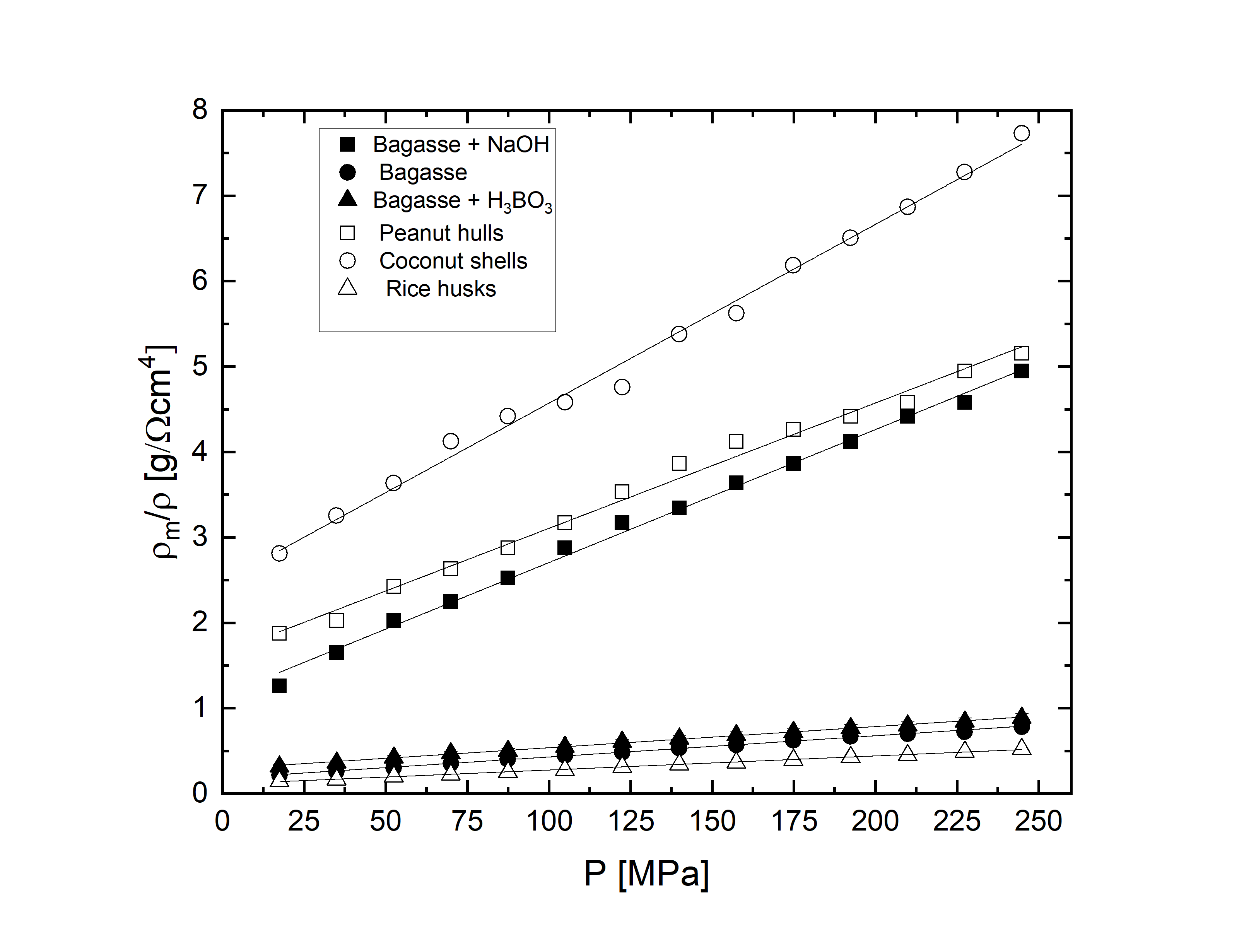Abstract
This study presents a simplified experimental method for evaluating the electro-mechanical behavior of activated carbons derived from agro-industrial residues such as sugarcane bagasse, coconut shells, peanut hulls, and rice husks. Using a two-point electrical measurement under controlled uniaxial pressure, we introduce and analyze the parameter ρm/ρ, which shows a strong linear correlation with pressure across all samples. The effective conductivity (σₑ) is modeled using an effective-medium approximation, revealing two competing effects of pressure: improved grain contact at low pressures and grain fracture at high pressures. The derived expression for σₑ(P) incorporates four key parameters that act as a fingerprint for each material. Experimental results confirm the model's predictive capability and highlight the influence of material composition, notably SiO₂ content, on conductivity. This approach provides a reliable, low-cost tool for preliminary assessment of the textural and conductive properties of activated carbons, with potential implications for their optimization in electrical applications.
References
[1] P. Simon, Yury Gogotsi. Nature Materials. 7, 845 (2008)
[2] R. G. Machado-Garc ́ıa, “Synthesis of composites based on activated carbon and TiO2 doped with Co and Fe from residues for the photocatalytic degradation of Cibacron yellow F-4G dye”. PhD. Thesis, Universidad de Oriente, (2022)
[3] V. N. Rubchevskiy, S. A. Ovchinnikova, Yu. A. Chernyshov, I. V. Zolotarev, Yu. A. Yatsenko, E. I.
Toryanik, A. V. Gryzlov, and S. S. Kubrak. Coke and Chemistry. 57, 381 (2014).
[4] D. Stroud. Physical Review B.12, 8 (1975)
[5] N. Warren. Journal of Geophysical Research. 78, 352 (1973)

This work is licensed under a Creative Commons Attribution-NonCommercial 4.0 International License.
Copyright (c) 2025 Cuban Physical Society & Faculty of Physics of the University of Havana

